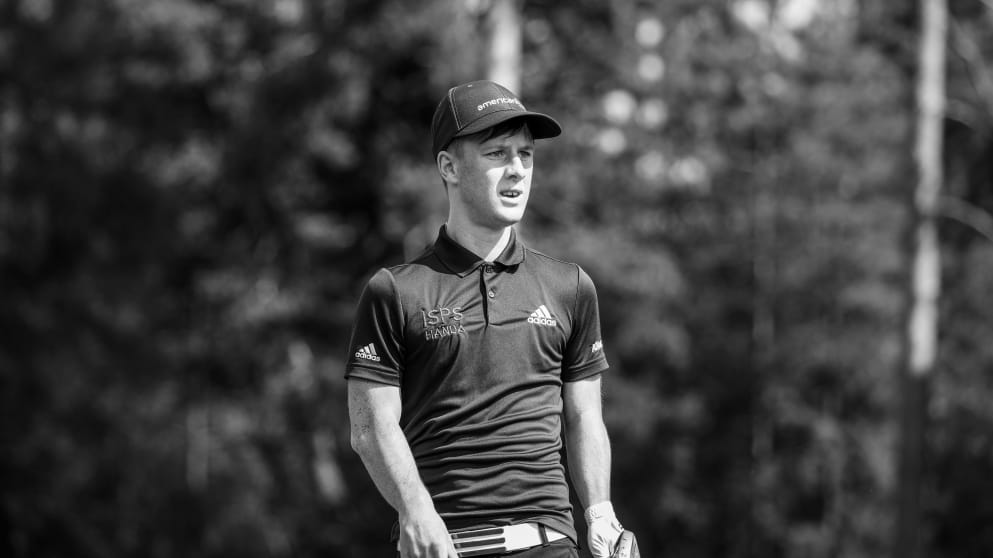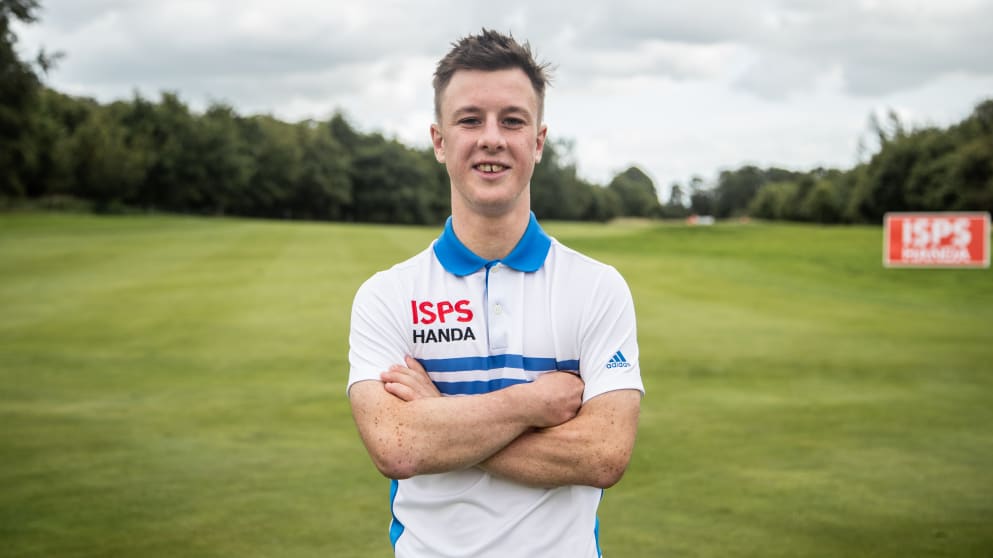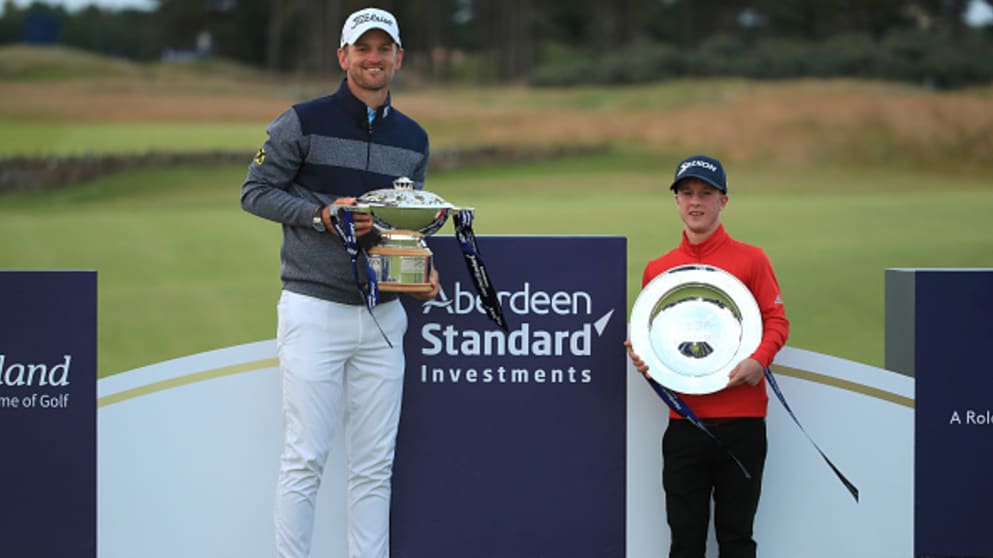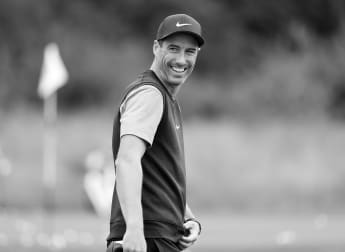In this week’s Player Blog presented by Enterprise Rent-A-Car, EDGA golfer Brendan Lawlor talks about embracing his disability, inspiring others promoting the game, and teeing up in a European Tour event


I’ve never thought of myself as any different. My condition is called Ellis–van Creveld, which is a type of dwarfism that means I have a shorter stature and shorter limbs, but I’ve never let any barriers stop me. My parents were a huge factor because they have never treated me any differently. I love all sport, and I could have turned my head to rugby and my mam would have said you go and see how you get on. They never stopped me doing anything and I think that’s why I’m here today. I also had open heart surgery when I was young because I was born with a hole in my heart and I was in hospital for about nine months, but I think I was just destined to live.
I’ve always embraced my disability, because everyone has things wrong with them, but I think it’s about how you accept it. One aspect of my disability is that I don’t have any knuckles in the top of my fingers, which means it’s tough to grip the golf club. I can’t bend my fingers in or make a fist, so my two index fingers sort of hang off the club, but I’ve adapted because it’s all I’ve known.
Before taking up golf I played ‘Pitch and Putt’, which is 18 par threes from about 30 to 70 yards. It’s huge in Ireland, and it’s probably the secret to why Irish golfers are known for their short game. My grandad introduced me to it at about four years old, and he had little greens in his garden that he would do up for me and I used to go and just chip for hours on end. It became an addiction for me, and I played that competitively from about nine or ten years old.
I didn’t take up golf properly until I was 15 because I was never big enough or strong enough, but by the time I was 18 or 19 I got my handicap down to three. I started to fill out a little more and knew I could compete against people my own age, and I think I got good quite quickly because I enjoyed it so much that I put in a serious amount of hours. I relied a lot on my short game because I wasn’t hitting it very far, but I practiced every day and summer by summer I kept gaining by about 30 or 40 yards. I got addicted to getting better, and then started to make it on to senior teams.
I only got into disability golf two years ago. My auntie found EDGA on a website, but initially my mam was afraid to ask if I would try it because she thought I might be insulted. I don’t really think of myself having a disability or being different, and everything is so normal in my life, but she said would you try disability golf, and I thought I’d give it a go.

I think the most I’ve ever learnt about myself was during that first EDGA competition I played in Portugal in 2018. I was playing at a high level in Ireland and I expected it to be an absolute breeze, I honestly went in thinking I was going to win by ten shots. I think I came fourth, but I left that event completely inspired by the talent, watching these guys on one leg hitting it 300 yards. It was the biggest eye-opener I’ve ever had, because I learnt that you should never underestimate the talent of others. I also realised that it’s not all about winning, it’s not always just about your golf but the camaraderie, what you can learn from others, and promoting the game. I knew then that it was a fantastic and inspirational road to go down, but I couldn’t predict how many doors it has opened for me.
We’ve had a few experiences now of playing alongside professionals, and I can’t thank the European Tour enough for what they have done for us. I played the Australian All-Abilities in 2019, and then we played in between groups at the World Cup of Golf with the same format as the pros. It was probably one of the best weeks of my life, and the inclusivity was incredible.
Then we went to Scotland for the EDGA Scottish Open, and I remember on the Tuesday I was hitting balls next to Rory McIlroy. It was surreal. I got the win that week which made it extra special, and I shot level par the final day. For us, the winning part is just being there and competing but if one of us shoots a score it’s even better, to show people we can do it as well. That week was huge for disability golf, and the tee times all worked which was great, and then it went smoothly in Dubai the next time too.
The acceptance the Tour pros have shown has been incredible. You’re stepping into their stomping ground where they make a living, and I couldn’t believe how nice everyone was. I remember being in the players’ locker room and Thomas Pieters and his caddie Adam came over and had a full conversation with me and my dad. It was just so great because you’re a little uncomfortable and they are so accepting.
I also met Shane Lowry and Paul Dunne over in Australia at the World Cup of Golf, and it’s incredible to have your fellow countrymen accept you and take you under their wing, and we played practice rounds together. Last year Paul missed the cut at the Scottish Open but waited around to congratulate me on the 18th green when I won. It was such a special moment when he did that.

I can’t wait to play my first Tour event, but I’m not going in with any expectations. I’m playing well, the game is in a good place, but I really don’t mind what I shoot because it’s another opportunity to promote the game. I’m just going to embrace being able to compete in that company. I can’t affect what anyone else does, they can’t affect what I do, and I’m just really happy to be here.
It won’t be too different because we played off the same tees in Dubai and Scotland when we played alongside those events. Normally during a regular disability event we’d play courses around 6,400 yards, whereas in Dubai we played the Tour course at 7,600 and I loved it. Obviously they are hitting it far longer than us, but there’s so many ways to get around a golf course, and as disability golfers it’s amazing to be able to show we can get it around too at an event like that.
After last season I ended up having surgery on my knee. As a disability golfer it’s important to keep yourself fit, because in general we’re vulnerable to injuries and it has the potential to keep us out for so long. I’ve always kept myself in OK shape, in the gym and a lot of walking, but I was in Germany last November at an event, and I got on to the first tee on Sunday morning and I felt something pop in my knee after my drive. Adrenaline kept me going and I thankfully won, but I got to the airport that night and I couldn’t walk and had to get a wheelchair from Dublin airport to the car.
I got an MRI three days later, and I was supposed to be heading the Dubai for the European Tour event, so I decided I didn’t want the results until afterwards. I said I’ll see how it is, I played Dubai and then Australia, and then I found I had torn my meniscus in seven different places, so I got keyhole surgery and a part of that cartilage was taken out. It took me longer to recover than the three or four weeks it was expected to take, and it’s still not back to full strength, but it’s a lot better than it was.

One question I get a lot is about my clubs, but I really don’t fiddle around. I’m 4 foot 11, but when I started to play equipment was a lot more limited so my driver, three-wood and five-wood are all standard length and I’ve never changed that because I can’t really afford to lose distance. My irons are only half an inch shorter and three degrees bent, but I like my wedges a little shorter to have a bit more control and my putter is about 32 inches, which is two inches shorter than standard.
I’ve been as high as World Number Two and I’d love to get to World Number One, but promoting the game is more important to me. A lot of people in the top ranking focus so much on climbing the Rankings they forget what else we are doing, which is helping people out of hospital or helping how people feel, and I think that’s a huge part of it. I want to help get more players in to the game so that it can become more competitive, but also just to help people, no matter their ability or level.
There are so many aspects to disability golf that are incredible, and one of my biggest goals is to try and encourage more players to get into the game, because it’s the most inclusive sport in the world. Some people with a disability might not have many friends, but I think golf is really something that can help both socially and with mental health. You’re getting out in the fresh air for four hours, can take your mind off things by chatting to your friends, and you can still be competitive with anyone, no matter of handicap, age, gender or disability. ISPS HANDA and Modest! Golf showed how beautiful the game is last year with the World Invitational, bringing men, women, and disability golfers together in one event. It was huge, and I really hope there’s more of that in the future.






